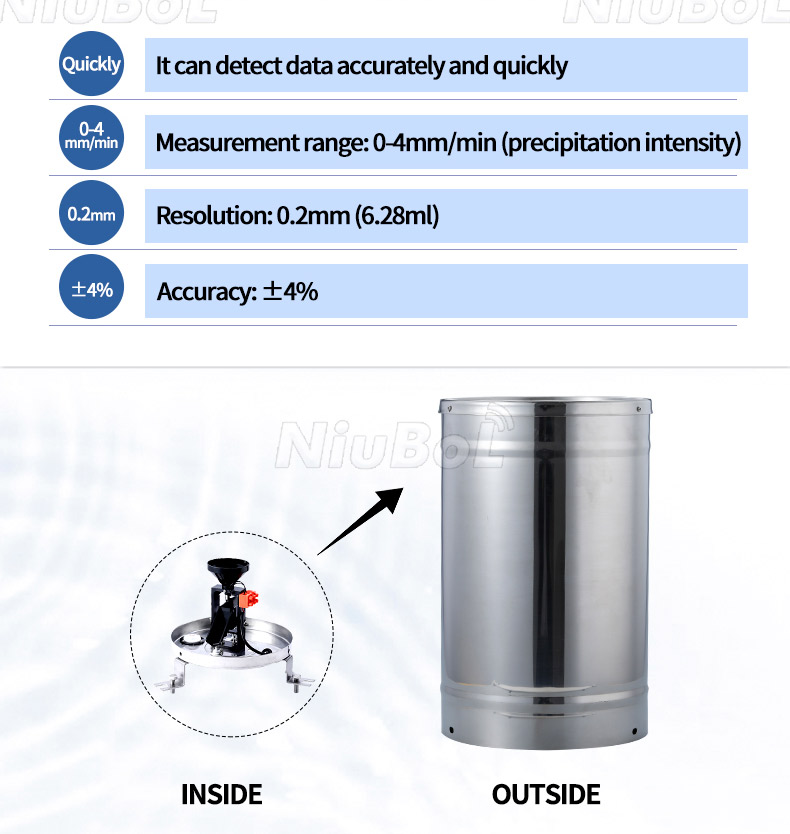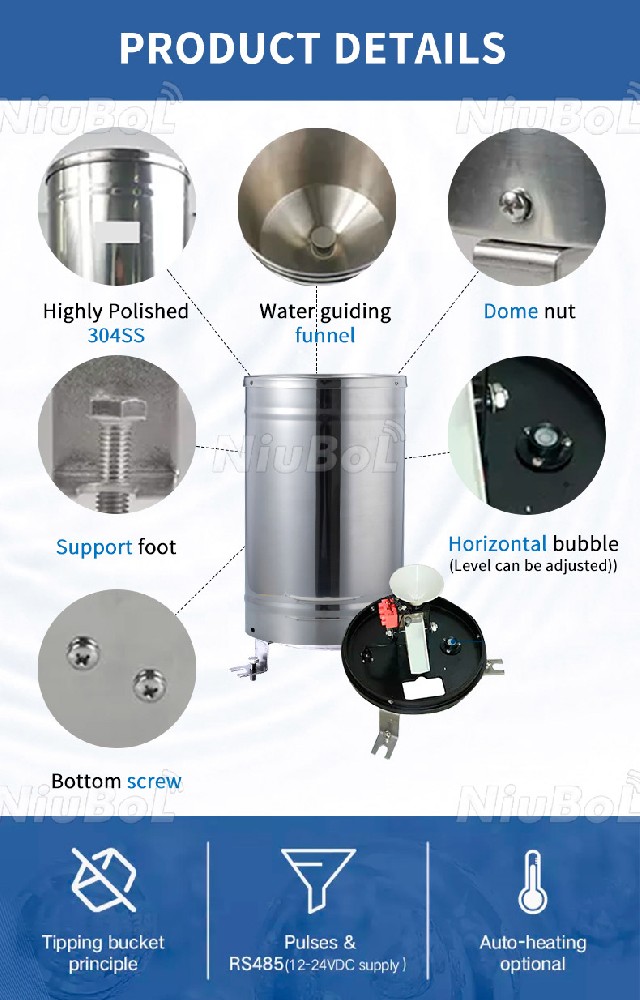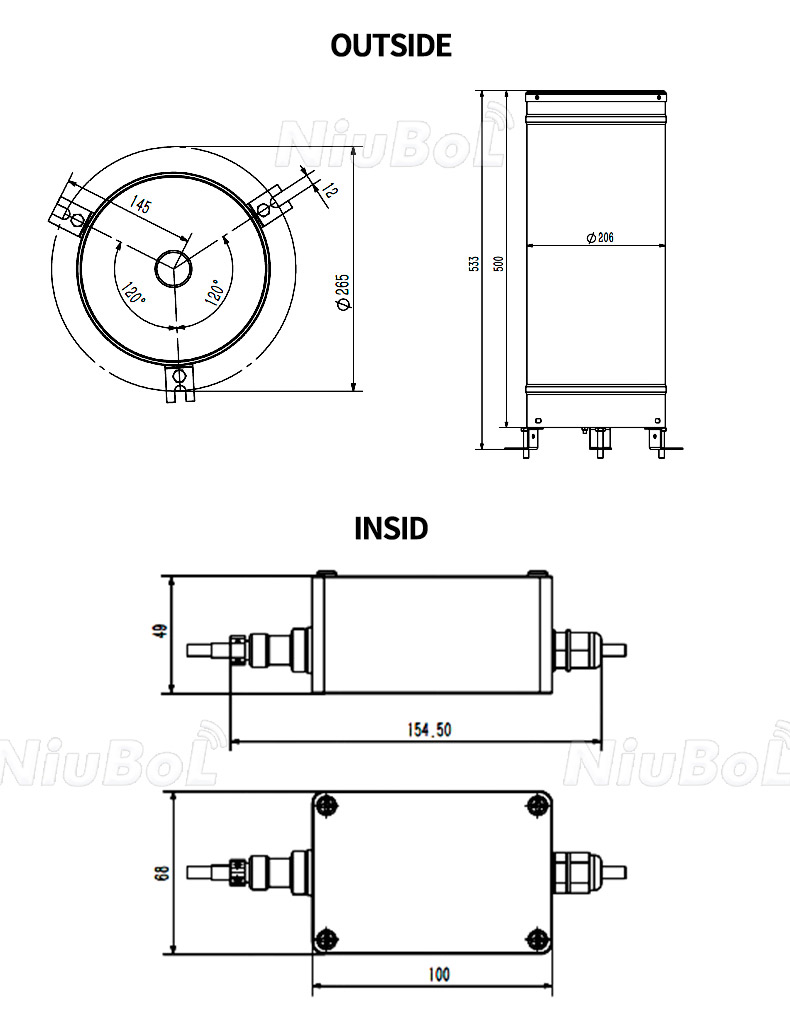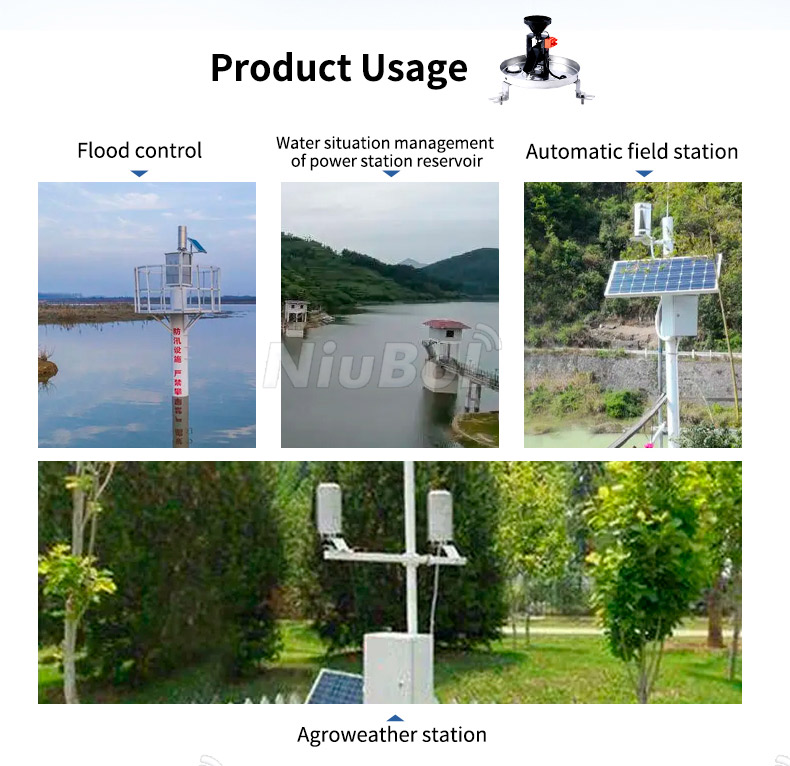

— Blogs —
—Products—
 Consumer hotline +8618073152920
Consumer hotline +8618073152920 WhatsApp:+8615367865107
Address:Room 102, District D, Houhu Industrial Park, Yuelu District, Changsha City, Hunan Province, China
Technical Support
Time:2024-01-14 14:07:06 Popularity:2216
A tipping bucket rain sensor (tipping bucket rain gauge) is a common instrument for measuring rainfall. The following are installation requirements and methods as well as common faults and solutions for tipping bucket rain gauges:

Tipping bucket rain gauge installation requirements and methods:
1. Check before installation: Check whether all parts are intact before installation, including whether the whole and parts of the rain gauge are firm.
2. Choose a suitable location: choose an open, unobstructed and representative area as the installation point, away from buildings, trees and other objects that may interfere with rainfall.
3. Installation base: Install the Tipping Bucket Rain Gauge on a solid base, making sure it is vertical and parallel to the ground.
4. Calibration: Before installation, calibrate the tipping bucket rain gauge according to the instructions provided by the manufacturer to ensure accurate measurement of rainfall.
5. Connection to data logging device: Connect the Tipping Bucket Rain Gauge to a data logging device (e.g. data collector or weather station) to monitor and record rainfall data in real time.

Common faults and solutions of tipping bucket rain gauge:
1. Tipping bucket cannot be tipped: It is possible that the tipping bucket is clogged internally and cannot be tipped. The solution is to check and clear any debris or dirt inside the tipping bucket.
2. Inaccurate tipping of the tipper: Inaccurate tipping may be caused by worn or damaged internal parts of the tipper. The solution is to replace the damaged or worn parts and keep the tipper operating properly.
3. Abnormal data recording: If the recorded data does not match the actual rainfall, there may be a problem with the data recording equipment. The solution is to check the connections and settings of the equipment to ensure that it is working properly and carry out the necessary maintenance and calibration.
3. Clogged funnel: This may be caused by the absence of rainfall for several consecutive days, poor air quality or high wind and sand levels. The funnel should be checked and cleared regularly to ensure it is clear.
4. Faulty wiring: This may be caused by the connecting cable between the two rain gauges being chewed by rats, other animals or having poor contact, etc. The cable should be checked and repaired. The damaged cable should be checked and repaired or the connecting cable should be replaced.
5. Overall failure of the rain gauge: This may be caused by damaged sensors, faulty circuit boards or other hardware failures. If the problem cannot be solved by simple inspection and adjustment, it may be necessary to replace the entire rain gauge.
When using and maintaining the tipping bucket rain gauge, follow the manufacturer's recommendations and precautions, and perform regular maintenance and inspections to ensure proper operation and long service life.

tipping bucket rain gauge daily maintenance
1. Pay attention to protect the instrument from collision, especially the mouth should not be deformed; ensure that the body is stable and the mouth is level. The instrument can be tested by vernier calipers and levelling scales every year. Unmanned rain gauge station, the instrument should take special safety measures.
2、In the process of using the instrument, it is necessary to clear the silt (mud, dust, leaves, insects and other debris) regularly according to the actual situation, check and dredge the watercourse, wipe the ring mouth of the rain bearer and the inner surface to ensure that the water flows smoothly.
3, tipping bucket parts of the water-holding hopper room, such as sediment, can be cleaned with a cleaning pen clean water or alcohol to clean up, fingers do not touch the inner wall of the hopper room, in order to prevent oil contamination, affecting the measuring accuracy of the tipping bucket.

When installing and using the tipping bucket rain gauge, always follow the specific instructions and operating guidelines provided by the manufacturer to ensure accurate measurement and recording of rainfall. In case of complex problems, it is recommended to consult a professional technician or the manufacturer's support.
Prev:Installing a weather station
Next:Common faults and problems of agricultural weather station include
Related recommendations
Sensors & Weather Stations Catalog
Agriculture Sensors and Weather Stations Catalog-NiuBoL.pdf
Weather Stations Catalog-NiuBoL.pdf
Related products
 Combined air temperature and relative humidity sensor
Combined air temperature and relative humidity sensor Soil Moisture Temperature sensor for irrigation
Soil Moisture Temperature sensor for irrigation Soil pH sensor RS485 soil Testing instrument soil ph meter for agriculture
Soil pH sensor RS485 soil Testing instrument soil ph meter for agriculture Wind Speed sensor Output Modbus/RS485/Analog/0-5V/4-20mA
Wind Speed sensor Output Modbus/RS485/Analog/0-5V/4-20mA Tipping bucket rain gauge for weather monitoring auto rainfall sensor RS485/Outdoor/stainless steel
Tipping bucket rain gauge for weather monitoring auto rainfall sensor RS485/Outdoor/stainless steel Pyranometer Solar Radiation Sensor 4-20mA/RS485
Pyranometer Solar Radiation Sensor 4-20mA/RS485
Screenshot, WhatsApp to identify the QR code
WhatsApp number:+8615367865107
(Click on WhatsApp to copy and add friends)
